This is the facility in question, or rather the sketch of it:
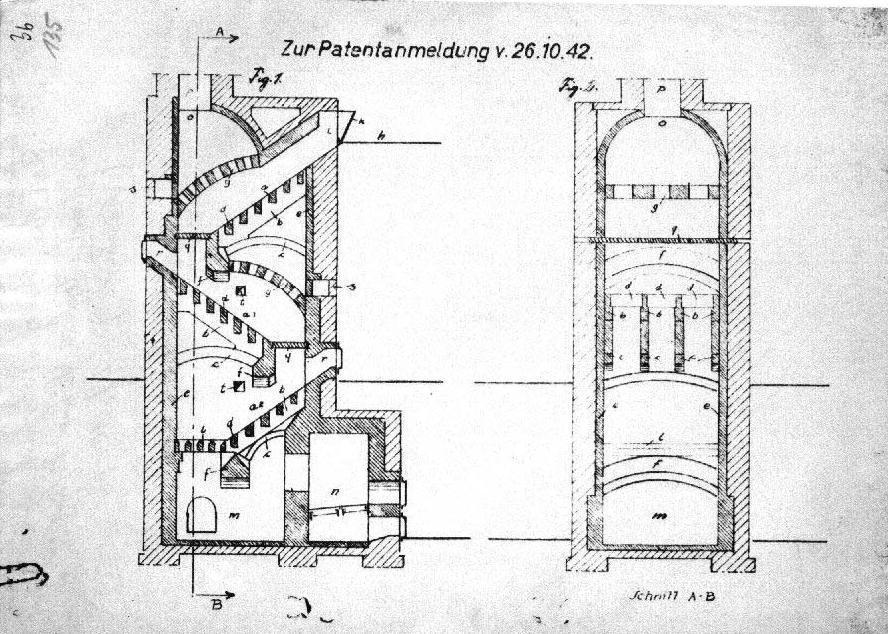
More info here (page 13): https://web.archive.org/web/20091229153 ... _ef_en.pdf
Also: http://web.archive.org/web/201209021007 ... id=120&l=1
Clearly, it was never built. But why? The common belief is that Auschwitz was some sort of highly effective extermination camp, where the Germans employed the best technology of the time to most efficiently kill as many Jews as possible. However, the reality of the situation is quite the opposite. The Auschwitz cremation devices used were cheap, poorly designed and were liable to long periods of failure. Their cremation capacity was, at best, mediocre for the technology of the time period. For a place where allegedly more than 1 million people were killed, the need for highly effective crematory ovens is obvious. So why wouldn't they have built this highly effective corpse incineration device?
Usually, the claim is that Auschwitz crematoriums were highly effective for the purpose, that they used the best technology that was available at the time. Upon closer inspection, this does not appear to be the case. The most comprehensive investigation in this regard was published just a few years ago, and contains over 1,000 pages of in-depth technical insights, documents, and photographs on the topic:
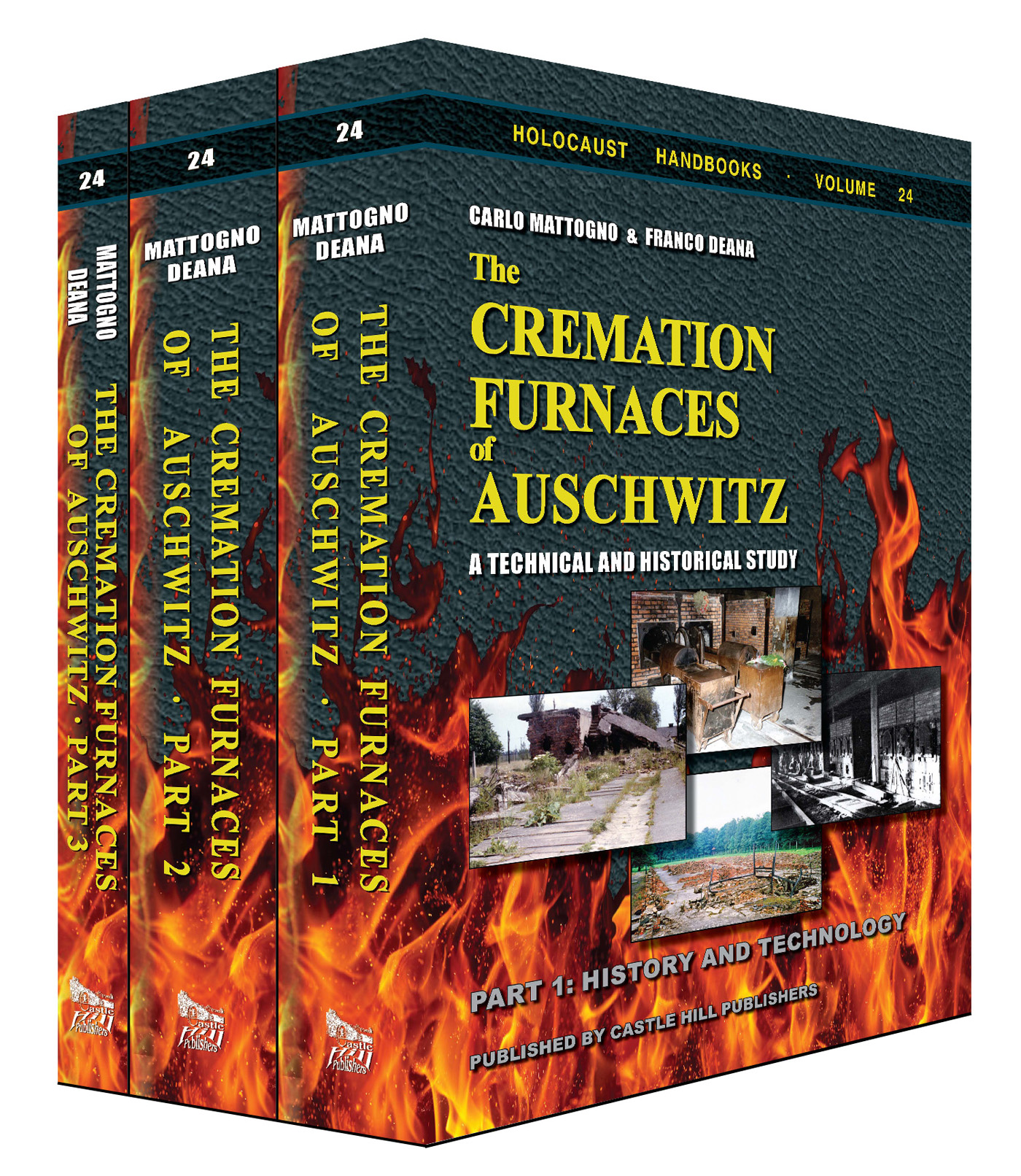
Carlo Mattogno: The Cremation Furnaces of Auschwitz—A Technical and Historical Study
https://holocausthandbooks.com/dl/24-tcfoa.pdf
At first, only one crematorium was planned for "Extermination camp" Auschwitz Birkenau, but in 1942 the camp was ordered to increase its population to 200,000 people, and the outbreak of a massive typhus epidemic caused hundreds of people to die of disease each day at one point in time. This is also what motivated the Germans to order so much Zyklon-B to the camp, which was used to delouse and fumigate clothing and bed sheets to kill the disease-carrying lice.
Actually, compared to Buchenwald and Dachau (which are not claimed to be "extermination camps") Auschwitz had fewer oven muffles when calculated as a ratio of the number of muffles per death in the camp in August 1942.
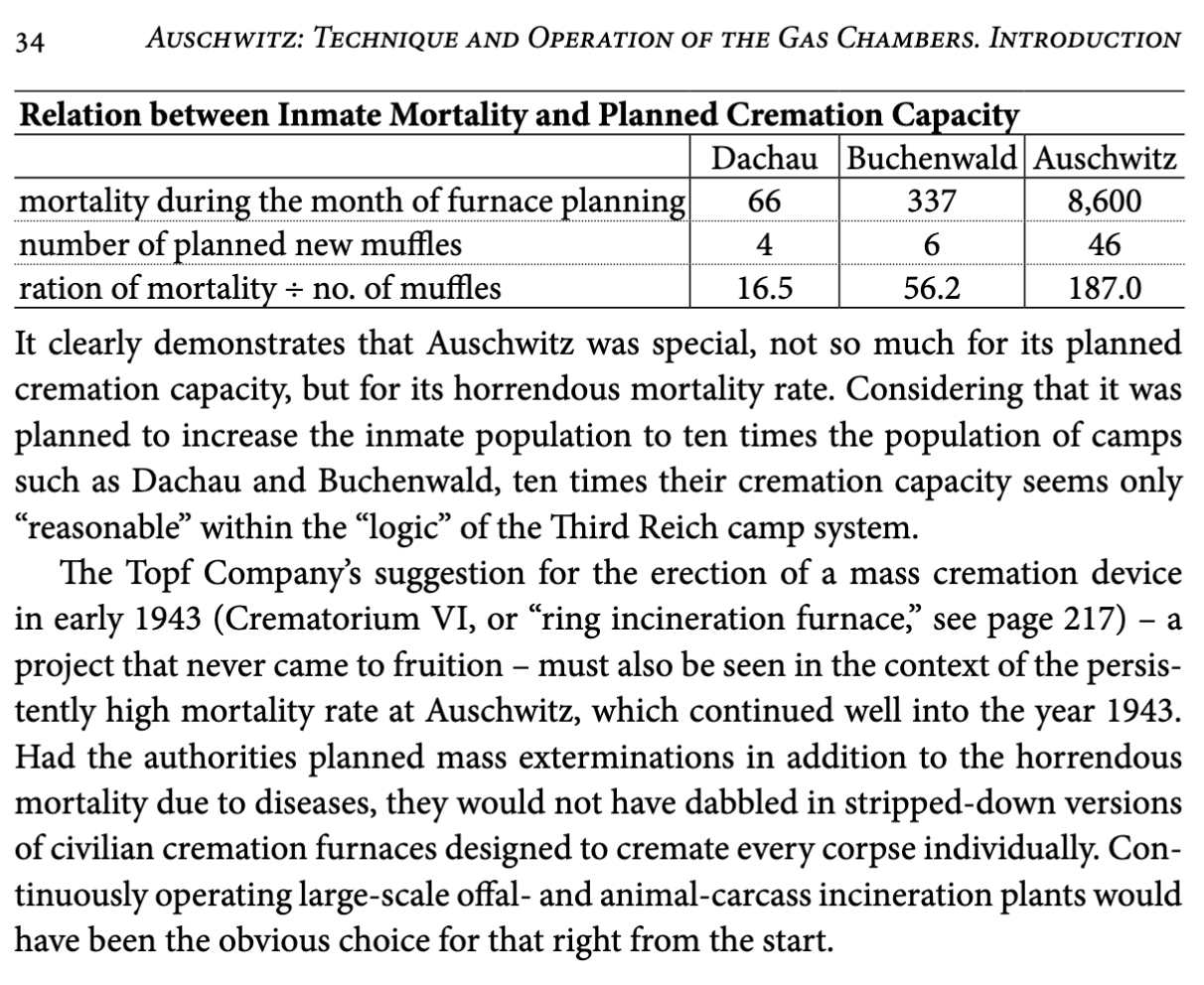
Some additional points about the Auschwitz cremation furnaces:
- Although documentation about the cremation capacity of the furnaces at Auschwitz has mostly disappeared, almost identical furnaces (to the ones at Crematoria II and III) were installed at the Gusen Camp in Austria. What we know from these documents is that cremation of one corpse took on average one hour, and it required 25-30 kg of coke per hour or corpse if continuously operated
- Compared to normal civilian furnaces, the muffles at Auschwitz were smaller because they were designed to accommodate one corpse without a coffin. The coffins actually acted as fuel to help cremate the bodies, so additional fuel was needed to make up for this.
- The Auschwitz furnaces had no recuperators, which are used to recover heat from exhaust. This also ended up necessitating additional fuel for the cremations.
- Combustion air that was fed into the Auschwitz furnaces was cold, and therefore the furnaces operated at lower temperatures and this extended cremation time.
- The Birkenau furnaces had no forced-draft blowers to increase the chimney's draft, and had a limited means of regulating air flow with ports and shutters. Therefore, they couldn't operate under "ideal" conditions for very long.
- The 10 triple-muffle furnaces of Krema II & III had a serious flaw in their design: the combustion air of the lateral muffles flowed into the center muffle, causing its combustion air to flow with twice the speed. This led burning combustion gases to rush into the flues, overheating them. They also had only one blower feeding cold air into the lateral muffles, reducing the cremation controllability.
- The fragile refractory bricks of the ovens would have been damaged severely by high temperatures, causing significant down time. The Krema II chimney was damaged in March 1943 because of overuse. Breakdowns were actually quite frequent.
Cremation capacity is a scientific matter. The technology can not be used cremate a larger number of corpses than the laws of physics permit, nor can they cremate them faster without additional risks. Despite this undeniable fact, orthodox Holocaust historians will often cite documents which make claims of extremely high cremation capacity of the Auschwitz furnaces, as if somehow words typed on a paper can prove that something scientifically impossible actually occurred. I will only bring up the two most common ones here:
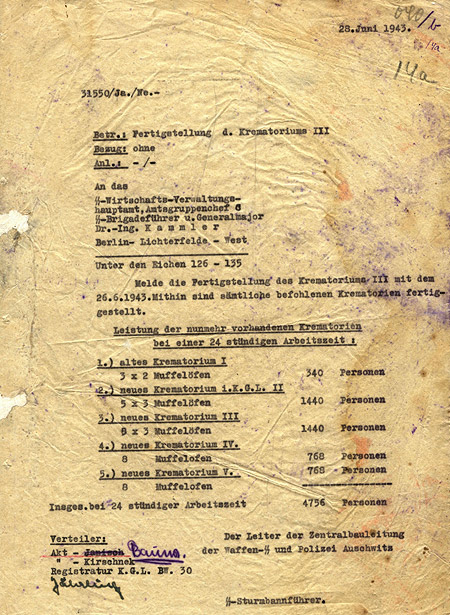
The claims made in this document are completely absurd and it is certainly a forgery. Mattogno handles it on page 341 of his book linked above ("9.6. Discussion of the Zentralbauleitung Letter of 28 June 1943").
It is also discussed here:
Bischoff Letter Dated June 28th 1943 and Krema 4
viewtopic.php?t=12164
This document has also been floating around:
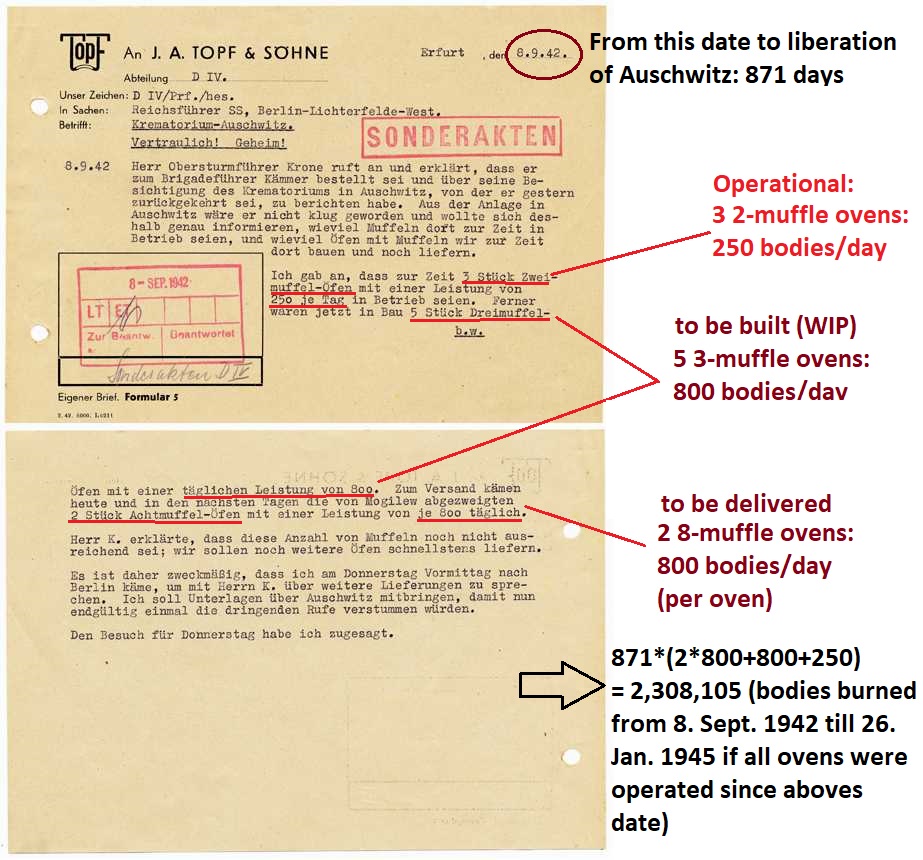
In fact it was merely a proposal that was rejected. Also, the document dates from 8 September 1942, so it was written at a time when the crematories at Birkenau did not even exist. Therefore, it cannot be considered an indicator of actual operational efficiency.
It has also been addressed here:
Prufer letter / '80,000 Cremation Capacity Per Month Not Sufficient for Auschwitz'
viewtopic.php?t=12465
On the topic of outdoor cremations, I recommend the following:
[Video] Holocaust Stories vs Science - How Does Open Air Cremation Work // Treblinka Cremations debunked
viewtopic.php?t=12710
[PDF] Carlo Mattogno: Auschwitz: Open-Air Incinerations
https://holocausthandbooks.com/dl/17-aoai.pdf
Also recommended:
Cremated remains, bone ash, and water-solubility // the ash ponds
viewtopic.php?t=12278
Wyatt: 'What revisionists get wrong about cremation.'
viewtopic.php?t=12721
Capacity and Role of the Auschwitz Crematoria - Arthur R. Butz
https://codoh.com/library/document/1025/
The Crematoria Ovens of Auschwitz and Birkenau - Mattogno
https://codoh.com/library/document/921/
The Crematories of Auschwitz: A Critique of Jean-Claude Pressac - By Carlo Mattogno
https://codoh.com/library/document/2556/


